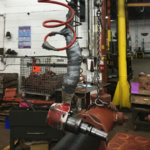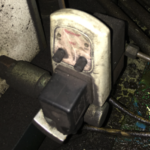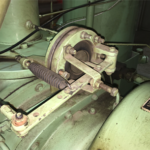
Air compressors and refrigerated air dryers typically produce large amounts of condensate, especially when operating in hot humid conditions. A fully loaded 150-hp compressor at a local manufacturer was producing about 750 cfm of compressed air on a 24 x 7 basis. The ambient temperature was 70° and relative humidity 50%. At this output the compressor produced about 7,560,000 cubic feet of compressed air per week.
At ambient conditions the air contains, according to the CAGI handbook (Chapter 3), 0.0716 gal of water per 1,000 cubic feet. But air dried to 35° dewpoint contains only 0.0054 gal per thousand. The difference is water that is removed at by the water separator, air dryer and main filter. At an output of 7.5 million cubic feet per week, this calculates to 500 gal of oily water that needs to be disposed of in an environmentally responsible way!
Typically, this water is sent to an oil separator system, with the condensate directed into a holding reservoir where the compressor lubricant, a potential pollutant, is skimmed off for disposal. The local manufacturer did indeed have a holding tank, in which water and oil separated. Unfortunately, the drain for this system was simply directed to the local sewer system — rather than being collected and sent to an environmental disposal company.
This company had high internal standards for environmental responsibility, and after becoming aware of the disposal problem, some quick corrections were implemented. If your plant has a similar system, it is recommended that you examine how you dispose of your condensate — so you can avoid a similar problem, and possible fine.
Interested in doing your own calculations? See the CAGI handbook here.





Leave a Reply